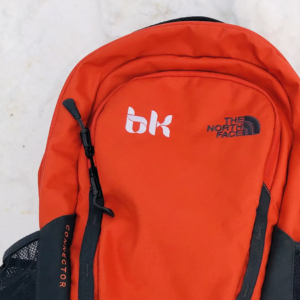Best Practices in Landing Page Design
We’ve been talking recently about what landing pages are and the things you need to consider before tackling a custom landing page project. Assuming you’ve figured out who you’re targeting, where they’re coming from, what you want them to do and all of those important questions, what’s next? What kind of elements do you use in the creation of a landing page to reach your goal?
When creating a landing page, there are five main areas that require special attention, especially when compared to a normal page on your site.
- Branding
- Calls to Action (CTAs)
- Images
- Forms
- Navigation
Branding Your Landing
Because landing pages are often created independently of the main site and for use with an external campaign, it may seem tempting to spruce things up and take a different approach when designing it. (Truthfully, this can be a problem any time a new marketing piece is developed.) This isn’t to say that landing pages aren’t designed differently, (they are) but certain things should never change. Namely, your branding. Branding is the way that potential and return customers recognize you, and it goes deeper than just your logo. Keeping colors, type, and styling consistent with the rest of your site can give you a boost with some visitors right off the bat by capitalizing on their familiarity with your brand. Typical landing pages lose over half of their visitors almost immediately, so anything–even something as simple as consistent branding–can help you perform better.
Call Me, Definitely
If the iconic Uncle Sam poster were made into a landing page, the title “I WANT YOU for the U.S Army” would serve as the perfect call to action (CTA). Below would be a quick, concise value proposition, be it a short paragraph or a list, that describes the value of what you’re asking in return:
- Fight for Freedom!
- Protect our Country!
- Become a Hero!
Patriotism brimming, visitors would then enter their name and address and click a button to “Find My Nearest Recruiting Station!”
While most of us can’t promise that our incentive will make our visitors heroes, it’s the same idea. All of the elements–from the image of Uncle Sam, to the title and value proposition, even the button text–speak clearly and instantly to the action we want visitors to take. The harder it is for someone to figure out what action you want them to take, the less likely it is that they’ll do it.
Get the Picture
As we mentioned above, the image of Uncle Sam fits perfectly with the goal of the CTA; his stern look and pointing finger further emphasize the message that it’s up to you to do your part. This should be your goal any time you’re thinking of crafting a landing page: don’t just use an image for the sake of having one, make sure it is relevant and assists the overall mission of the page. If you can’t find an image that fits, don’t use one!
Good Form, Ol’ Chap!
The form may seem like the easiest, most straightforward element of the landing page, but it too deserves special considerations. If you’ve done your job right in crafting a compelling CTA, your visitors will want to give you their information, but there’s a catch (there’s always a catch):
You need to make sure that what you’re asking for in the form is on par with and relevant to what the visitor will get in return. Would you give a stranger your social security number in exchange for a free T-shirt? Most likely not. But name, email and shirt size? Sure. It’s an extreme example, but it illustrates the overall idea. Name and email are the two basic pieces of info that most people would feel comfortable giving on a typical online form; if you are going to be asking for more, make sure it is warranted and appropriate or you risk losing conversions.
If you find that your audience is not as keen on sharing email, a great trick is to make it essential in claiming the incentive. Emailing a link to download content–as opposed to redirecting to a page where it can be found–justifies your request for an email address and takes an important first step in building a relationship via email.
Your form should also be one of the prominent features of your page. Ideally, the entire page should be simple enough that there’s nothing to compete with the CTA elements and the form, but if you decide your content needs to be more in-depth, don’t place it in such a way that it hides them.
Ditch the Navigation
One of the ways to make these elements focal points is removing distractions. One of the biggest distractions, somewhat ironically, is the rest of your site. Removing the navigation may sound strange, but it focuses the attention of your visitors where you want it.
As we discussed before, removing the navigation on a landing page leaves you with what is called a ‘squeeze page,’ a page thats sole use is to push visitors toward your desired action. Sure, you want people to visit your site and read the content, but the whole reason for having this landing page in the first place is to capture their information. Once you have that information, you can build a relationship and put that content directly in front of them which is much more valuable in the long run.
It can be difficult to craft these things perfectly the first time around, so brainstorming and drafting are essential. Even once your page is live, altering and testing different elements can yield results. Next week we’ll be discussing Conversion Optimization, or in English, some seemingly minor but important ideas meant to perfect your landing page and get you more results.
Other Articles
Navigating the Off-Season: Marketing Strategies for Outdoor, Overlanding, and Camping Brands
The world of outdoor adventure, overlanding, and camping is fueled by the passion for exploration, nature, and the thrill of...
Mastering Black Friday Cyber Monday Campaigns: Strategies for Outdoor Retail Brands
Black Friday Cyber Monday (BFCM) has become a pivotal period for businesses across various industries, and the outdoor retail sector...
Why Outdoor Retailers Must Plan Black Friday Cyber Monday Campaigns Well in Advance
For online retailers in the outdoor industry, the Black Friday Cyber Monday (BFCM) weekend represents a significant sales opportunity. However,...



